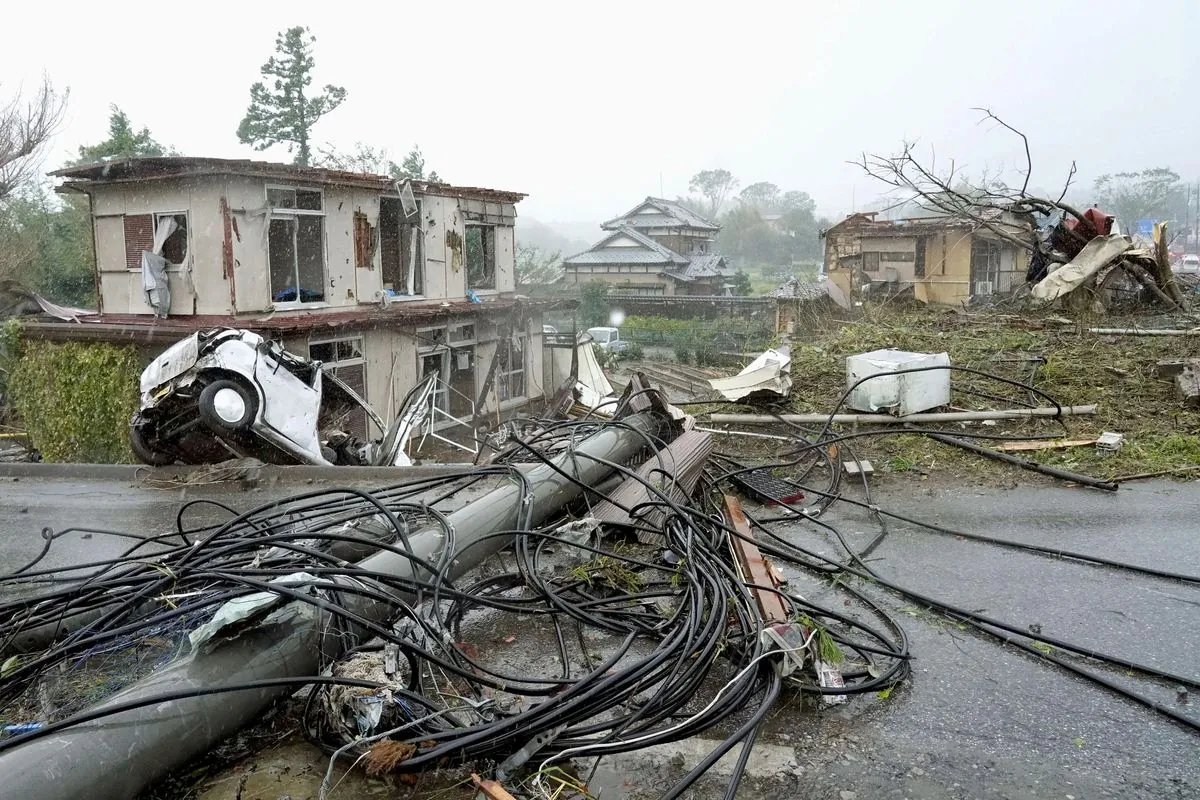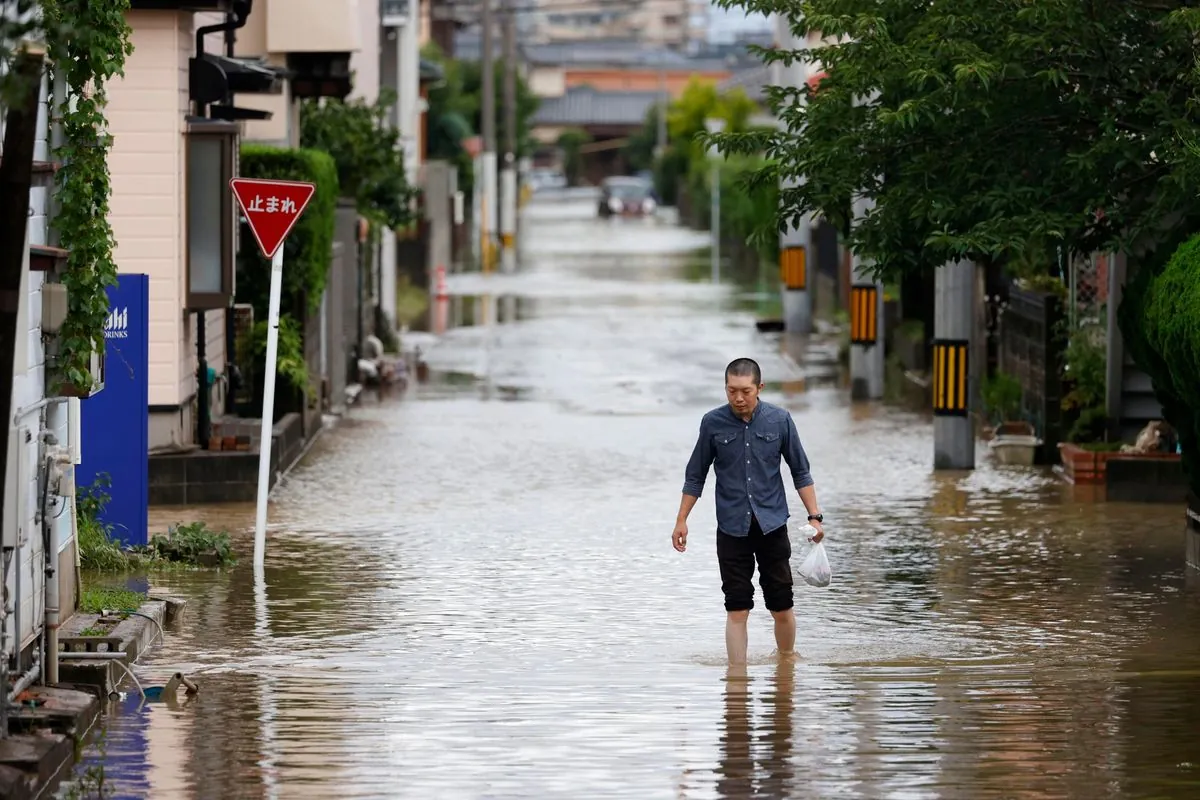Typhoon Shanshan Claims Lives and Wreaks Havoc Across Japan
Typhoon Shanshan has caused at least six fatalities in Japan, bringing torrential rain, flooding, and landslides. The storm has triggered widespread warnings and disrupted services across the country.

As of August 31, 2024, Typhoon Shanshan has claimed at least six lives in Japan, leaving a trail of destruction in its wake. The storm, which made landfall in Kyushu on August 29, has brought unprecedented rainfall to large areas of the country, prompting authorities to issue flood and landslide warnings extending hundreds of kilometers from the storm's center.
The Japan Fire and Disaster Management Agency reports one person missing and over 100 injured. In Kagoshima prefecture, southern Kyushu, more than 35,000 households are experiencing power outages, according to Kyushu Electric Power Company.
Despite being downgraded to a tropical storm on August 30, Shanshan continues to pose a significant threat. As of 12:50 p.m. local time on August 31, the storm was located approximately 480 km southwest of Tokyo in the Pacific Ocean, with wind gusts reaching up to 90 km/h.
The impact of the storm has been far-reaching, affecting areas as distant as Hokkaido, Japan's northernmost prefecture. Authorities have halted air and rail services, including the Shinkansen bullet train system, and shut down factories across the affected regions.

Japan, an archipelago of over 6,800 islands, is no stranger to typhoons, experiencing an average of three making landfall each year. The country's typhoon season typically peaks between August and October. Japan's extensive disaster preparedness system, including early warning mechanisms, plays a crucial role in mitigating the impact of such natural disasters.
While Shanshan is expected to weaken to a tropical depression over the weekend of August 31-September 1, meteorologists warn that it will continue to bring heavy rainfall. This prolonged precipitation raises concerns about potential landslides, a common hazard in Japan's mountainous terrain.
"We urge residents in affected areas to remain vigilant and follow evacuation orders from local authorities. The risk of flooding and landslides remains high even as the storm weakens."
As Japan grapples with the aftermath of Typhoon Shanshan, it's worth noting that the country has faced even more severe storms in the past. The most devastating was Typhoon Vera in 1959, which resulted in over 5,000 fatalities. This history of extreme weather events has shaped Japan's approach to disaster management and preparedness.
The current situation serves as a reminder of the ongoing challenges posed by climate-related disasters and the importance of robust emergency response systems. As recovery efforts begin, authorities continue to monitor the situation closely, emphasizing the need for public cooperation and safety measures in the face of this natural disaster.


































